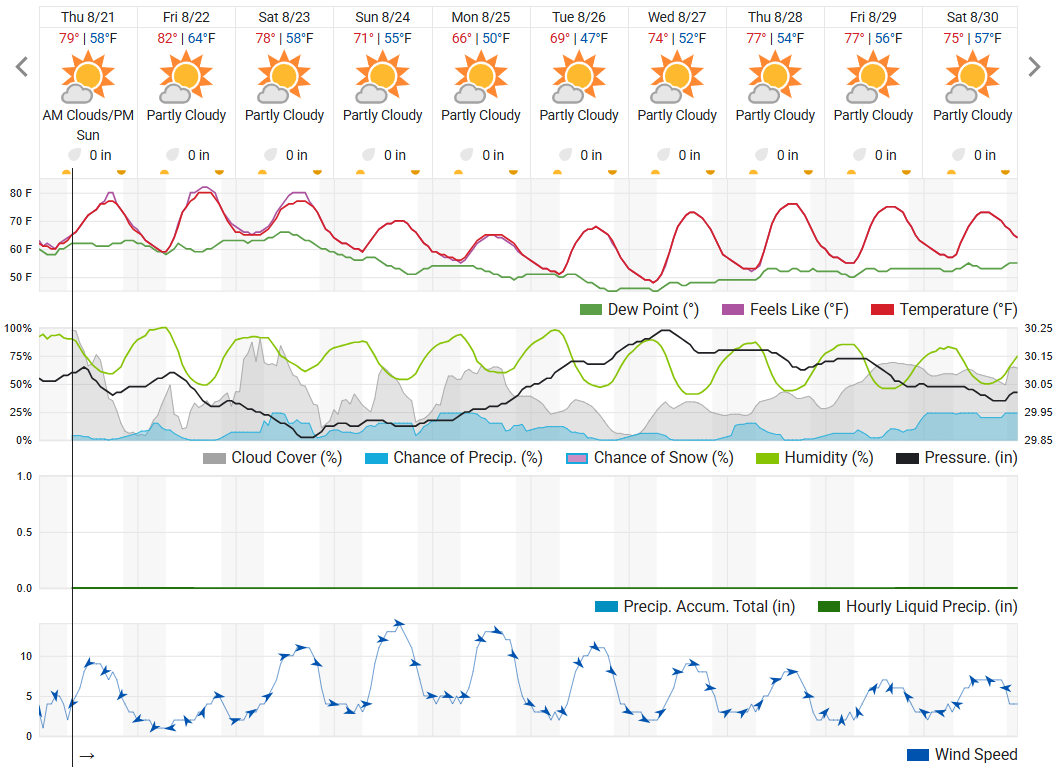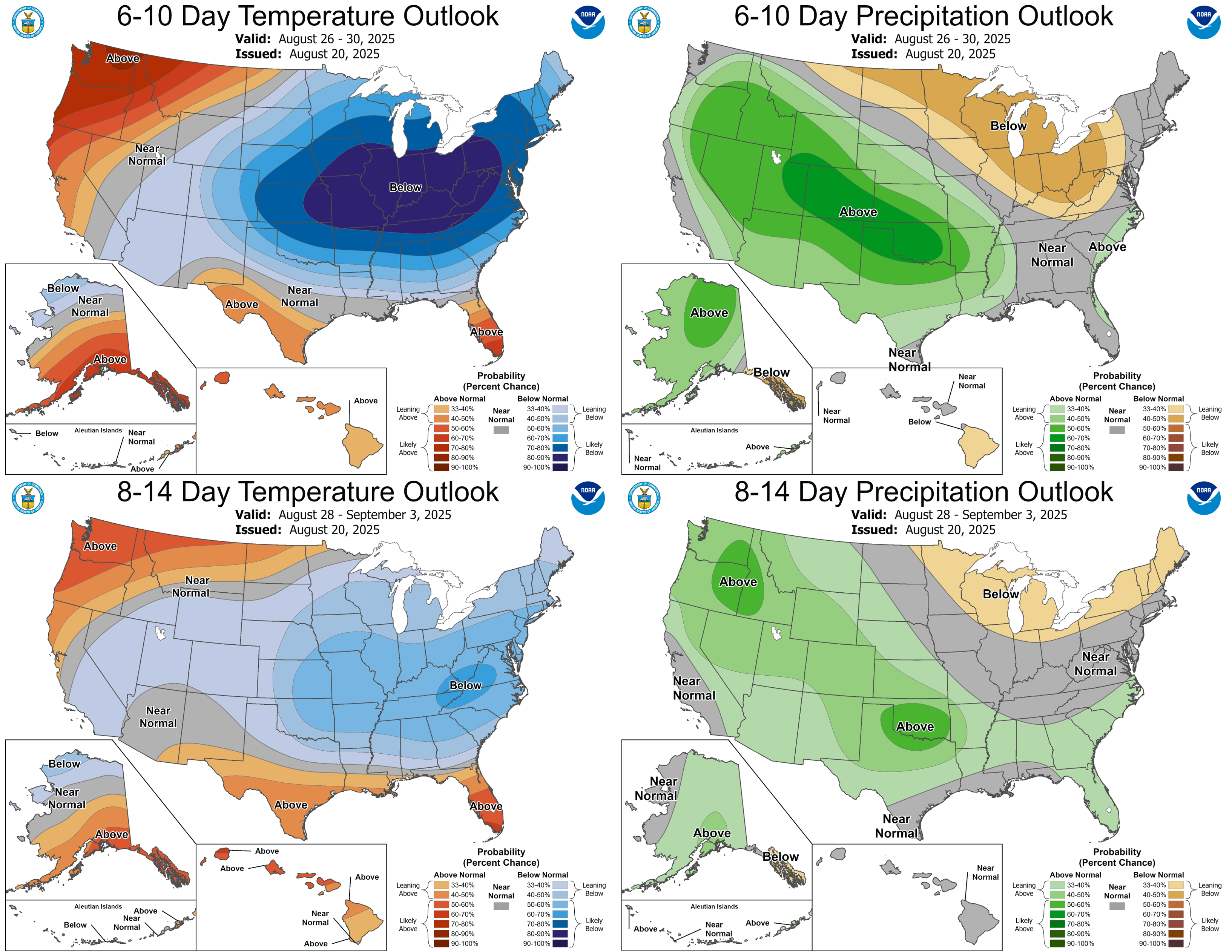By Nicolle Ritchie and Angie Gradiz
Weather
Much-needed precipitation fell early this week, ranging from a little over half an inch to two inches or more. Daytime temperatures continued to be relatively high, but nighttime temperatures were lower than they have been most of the summer. This upcoming week will bring a cooldown in daytime and nighttime temperatures, although little precipitation is expected for southwest Michigan.


Crops and pests
Soybean pod fill continued. Most soybeans have seeds of 1/8 inch or larger (R5), and some are close to full pod fill (R6). Watch for sudden death syndrome, brown stem rot and red crown rot, all of which have similar symptoms. Red crown rot is a disease new to the Midwest, and it has not been confirmed in Michigan yet. Several insects contribute to soybean defoliation at this time of year, including grasshoppers, Japanese beetles, bean leaf beetle and more. During R3 to R5, the action threshold is 10% insect defoliation. The article “Soybean Defoliation: It Takes a lot to Really Matter!” from the Ohio State University Extension has helpful images to evaluate defoliation and even a quiz to test and train yourself.
To evaluate soybean defoliation, first find a representative plant. Then remove the two trifoliates with the most defoliation and the two trifoliates with the least defoliation. Remove the best and worst leaflets from each of those trifoliates. This should leave you with one representative leaflet from each trifoliate and four leaflets in total. Finally, rate the defoliation of the remaining leaflets to come up with overall defoliation. In most cases, soybean defoliation is below threshold and does not require action. However, check regularly to make sure that significant feeding is not occurring on the pods.
Grain fill continued in corn. More acres entered R5 (dent), at which point indentations are visible on the outer tips of kernels. During this time, liquidy white parts of kernels are converting to starchier, more yellow parts. The visible delineation between these two parts of the kernel is referred to as the milk line. Male row destruction continued in seed corn, and defoliation sprays on some early planted acres are probably not far out.
Tar spot is present in most of the counties in southwest Michigan. The Crop Protection Network tar spot of corn map contains a helpful table for determining if a tar spot fungicide application is beneficial at various crop stages. As more fields enter R4 and R5, the benefit of applying a tar spot fungicide decreases. Southern rust was confirmed in St. Joseph County this past week. For more information on southern rust and how to manage it, check out the article “Southern rust an occasional threat to Michigan corn” by Michigan State University Extension field crops pathologist Martin Chilvers.
Source : msu.edu